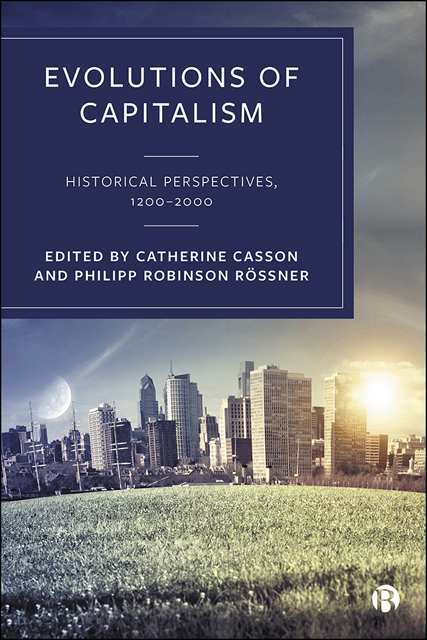Book contents
- Frontmatter
- Contents
- List of Figures and Tables
- Notes on Contributors
- Acknowledgements
- 1 Introduction
- 2 The Market as an Institution: Theory and History
- 3 Regulating Capitalism
- 4 Capitalism and State Ownership Models
- 5 Comparative and Connected Global Capitalism(s)
- 6 Capitalism, Imperialism and the Emergence of an Industrialized Global Economy
- 7 Religion and Capitalism
- 8 Capitalism and the Environment
- 9 Capitalism and Income Inequality
- 10 Conclusion
- Index
10 - Conclusion
Published online by Cambridge University Press: 13 October 2022
- Frontmatter
- Contents
- List of Figures and Tables
- Notes on Contributors
- Acknowledgements
- 1 Introduction
- 2 The Market as an Institution: Theory and History
- 3 Regulating Capitalism
- 4 Capitalism and State Ownership Models
- 5 Comparative and Connected Global Capitalism(s)
- 6 Capitalism, Imperialism and the Emergence of an Industrialized Global Economy
- 7 Religion and Capitalism
- 8 Capitalism and the Environment
- 9 Capitalism and Income Inequality
- 10 Conclusion
- Index
Summary
This volume has proposed that the evolution of capitalism was connected to the emergence of five distinct economic functions: entrepreneurship, finance, management, workers and political leaders. Some functions emerged as more dominant in particular locations and periods, and other functions in different locations and periods. Thus capitalism can be seen as a series of evolutions rather than a single one. This chapter will review the evidence in the book that informs on selected aspects of these functions. It will then highlight two key takeaways from the volume: geographical dimensions and values and beliefs. Finally, directions for future research will be proposed.
The book has reinforced the importance of situating capitalism in a wider historical context. Chapter 2 proposed that the modern market economy developed in 13th-century European towns and was stimulated by local and national regulation. Building on that analysis, Chapter 3 argued that during the 16th and 17th centuries elements of a shared philosophy pertaining to markets and their place in society can be identified in Continental Europe. Key themes were monetary regulation, customs and trade policies aimed at nurturing certain industries or branches of economy that were considered vital for the common good, and market regulation, in particular of urban product markets. These strategies and philosophies of market were invented, applied and modified centuries before modern capitalism, but were an importance influence on it.
While Chapters 2 and 3 emphasized the convergence of market regulation practices across locations, Chapters 4, 5 and 6 explored situations where countries developed different trajectories. Chapter 4 examined how the Scandinavian countries of Sweden and Norway developed ownership structures that differed both from the dominant US, UK and Continental models, but also from each other. Chapter 5 examined how merchants in Asia and Africa adopted cross-cultural and communal, rather than national or institutional, frameworks to underpin their global exchange with English and Portuguese merchants. This represented a different model to that employed in most instances of global trade, in which countries adopted a formal institutional framework for market regulation and aligned their practices with that of their trading partners. Chapter 6 demonstrated that a diversity of approaches also emerged in South America, Asia and Africa during the 19th and 20th centuries.
- Type
- Chapter
- Information
- Evolutions of CapitalismHistorical Perspectives, 1200-2000, pp. 237 - 250Publisher: Bristol University PressPrint publication year: 2022

